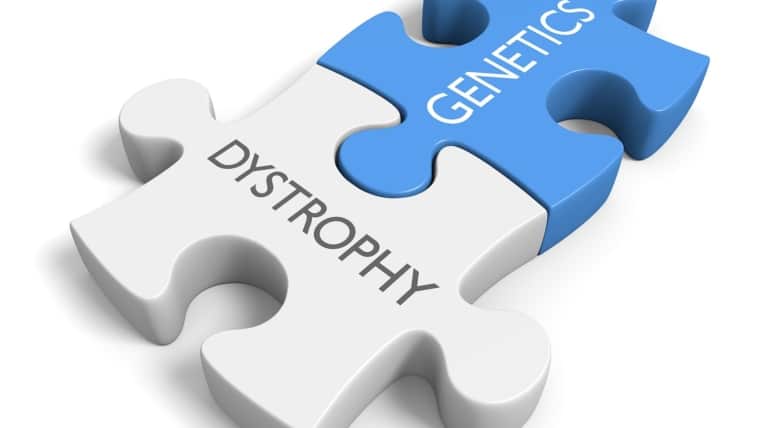In 1943, psychologist Abraham Maslow articulated a theory of human motivation referred to as the “Hierarchy of Needs.” Often depicted as a pyramid, fundamental human needs are ranked from the most basic physiological drives such as hunger and thirst through safety needs, social needs, and ultimately the need for what Maslow referred to as “self-actualization.” Maslow’s hypothesis was that humans are motivated to satisfy fundamental needs before they become concerned about higher order ones.
More recently, social scientists have examined the components of what makes for “Quality of Life.” Or more simply put, what makes us happy? Just as with Maslow’s hierarchy, this model focuses first on accessing food and shelter and ultimately friends, family, and activities we find meaningful.
At the core of need fulfillment is employment. Employment creates access to life’s necessities and niceties. Money may not buy happiness, but it buys opportunity. It buys food and shelter and transportation. It buys healthcare and access to professional support—from therapists to painters to pet sitters. Perhaps equally important, employment can drive personal satisfaction and can make us feel as though we are valued community members.
Current Outcomes
For adults on the autism spectrum, finding and keeping jobs is difficult at best and often simply impossible. We know this anecdotally, but studies are bearing this out with increasing regularity. Adults with ASD are chronically unemployed or underemployed. While these numbers certainly include a small population of adults whose autism or co-morbid condition renders them unable to work, many adults on the spectrum might well be employed more fully with more effective supports.
So what stands in the way of access to and success at jobs? For some adults with ASD, it may be inadequate training opportunities at the secondary and postsecondary levels. For others, it may be the lack of information and support in job-seeking—both in terms of identifying good fit and then in successful job application. Even when a job is secured, many adults with ASD face challenges in maintaining the job and maximizing opportunities on the job. Weak social fluency routinely affects keeping jobs—everything from making co-workers uneasy to being perceived as impertinent with supervisors.
Punctuality and absenteeism can be frequent, as many adults on the spectrum don’t drive and face transportation challenges. If executive dysfunction is present, organizational skills may be compromised and compensatory strategies must be developed. In addition, without sufficient training in job skills—including the “soft skills” of frustration tolerance, endurance, and flexibility—adults with ASD may find themselves lacking the tools for employment success.
A Triad of Needs
In order to see increased employment of adults with ASD, it would seem that a triad of components must be in place. First of all, young adults with autism need career assessment and training with teeth during the Transition years. Transition services must adequately consider individual strengths and challenges, and address these both in light of skill development and career identification. This often means being creative about job development and paying close attention to generalization of interpersonal and self-management skills.
Secondly, employers need to make a real commitment to hiring adults on the spectrum and must be able to access education and support for supervisors and co-workers.
And finally, job supports—including reliable transportation options—must be available and meaningful. Job coaching must include real skill development as well as dialogue with the individual—and often family members—regarding strategies of continuing and increasing success.
Entitlement versus Eligibility
For the adult on the autism spectrum, preparing for, finding, and keeping a job depends on 1) a solid understanding of individual employability and 2) a solid understanding of the system of supports that exists on both the federal and state levels. The process starts during the Transition years in school. According to the Individual with Disabilities Education Act (IDEA), which was reauthorized in 2004, transition services must begin at age 16 and last until the student graduates with a regular high school diploma or ages out of the system at age 21.
The reauthorization of IDEA places a heavy emphasis on transition services, mandating that IEPs address training needs in all aspects of adult living, including employment. It also mandates that adequate transition assessments be conducted to develop IEP goals. Students must be invited to participate in IEP development beginning at age 14, and it is crucial that students and families take the development of transition goals and inclusion of necessary services extremely seriously. While still in the public education system, a student is entitled to this type of support.
Once the student leaves the school system, access to employment supports is primarily a matter of eligibility, and will ultimately be based on availability of federal and state resources.
No Central Agency
Within the public education system, the IEP functions as the touchstone from which all services flow. It is important to note that no one point of contact exists in the universe of adult services. Rather, multiple agencies and programs can be found based on federal and state legislation. At the core of a huge, often convoluted, network of disability services is the Social Security Administration (SSA). The SSA administers many programs, including the retirement pension program workers access at age 65.
There are two primary SSA support programs for people with disabilities: Supplemental Security Income (SSI) and Social Security Disability Insurance (SSDI). While SSDI serves people who have paid into to Social Security system and then become disabled, SSI serves those who have a lifelong disability such as autism.
(There are benefits available for children of disabled workers under SSDI as well.) In order to receive SSI benefits, an adult with ASD must be found eligible. It is important to note that qualifying for SSI as a child does not automatically render one eligible in adulthood. A new application process must be undertaken for adult determination at age 18. Eligibility for SSI is dependent on 1) impact of disability; and 2) personal financial assets.
Qualifying for SSI means that an adult with autism can receive financial support in the form of a monthly Social Security payment. In addition to this, the SSA has created a number of work incentive programs. The Ticket to Work program provides employment supports such as job development and coaching to people who qualify for SSI. In addition, there are programs such as Plans to Achieve Self-Support (PASS) which allows eligible people to shelter assets from inclusion in SSI eligibility determinations.
Medicaid and Employment
The federal government works with the states to run Medicaid, which is basically a health insurance program for people with low incomes. The federal government matches state Medicaid dollars. In many states, qualifying for SSI automatically makes someone eligible for a basic set of healthcare services mandated by the federal government. However, the states may then provide other services—including some types of employment supports—at their own discretion.
The states then create eligibility requirements for these “optional” supports. In addition, states may petition the federal government to allow going outside Medicaid guidelines to offer different types of supports or to alter basic eligibility requirements. When states petition for and receive permission (and thus, federal dollars) to create Medicaid services that are outside federal guidelines, this approval is referred to as a Medicaid “Waiver.” From an employment standpoint, the Medicaid Waiver to note is the Home-and-Community-Based Services (HCBS) Waiver, also known as the 1915c Waiver.
The purpose of this waiver is to allow states to provide community-based support services to people who might otherwise require institutionalization.
The States and Vocational Rehabilitation
The federal and state governments also collaborate in provision of Vocational Rehabilitation services (VR) as per the Rehabilitation Act of 1973. Amended in 1998, this legislation mandates that each state and the District of Columbia create a program for providing time-limited employment supports. However, eligibility varies from state to state. Qualifying for Social Security benefits in the form of SSI does not automatically mean that an individual will also be found eligible for VR benefits, although some states use this as a starting point in eligibility determinations.
Although VR programs are mandated by federal legislation, they are funded with federal and state monies. Thus the availability of services in any one state is highly dependent on that state’s budget.
One Stop Centers
Another federal law, the Workforce Investment Act (WIA) of 1998, created employment supports housed in “One Stop Career Centers.” One Stop Centers are designed for all job-seekers, not just those with disabilities, and provide a number of employment services as well as access to information. Availability of services varies from center to center, as does how connected the center is to other state and community resources.
State Developmental Disability Agencies
In addition to programs created under federal law, most states also have government agencies that oversee services for people with intellectual and developmental disabilities. These programs are not structured by the federal government, and can vary dramatically from state to state. Each of these state programs has its own eligibility requirements and access to funds. Due to budget cuts, many states find their ability to provide services is limited and waiting lists are lengthy.
Local Services
Within each state are a number of Community Rehabilitation Providers (CRPs)—social service organizations that actually provide the services funded by federal and/or state monies. These organizations may be structured as non-profit or for-profit enterprises, and basically serve as subcontractors—sometimes referred to as “vendors”–to the government agencies.
CRPs are independent companies that can decide what services they will provide and whether they will enroll only those people referred by a state agency or whether they will also take on private clients. So it is possible to be found ineligible for SSI, VR, or state development disability agency resources and still utilize a local CRP’s services.
The Right Job
Understanding available programs in your state is just the first step in accessing employment supports. Crucial to creating a successful employment trajectory is analyzing job fit and assessing level of support required. These two components fit together like pieces of a puzzle. The right job with the wrong supports won’t work any better than the right supports for a badly matched job.
Job fit might be defined as a combination of type of work and structure of job. That is, not only must the young adult with ASD think about skills and interests, but also about the structure of the organization and work day. An interest and ability in video gaming, for example, does not mean that a young adult with ASD would necessarily enjoy or be successful in this industry. Working long hours as part of a design team may prove problematic. Loving to cook for your family doesn’t necessarily translate into the ability to handle the hustle and bustle of a restaurant kitchen. A good assessment will take into consideration not only skills and interest, but job structure.
Competitive Employment—competing with all other job seekers for existing positions—has historically been difficult for adults with ASD to achieve and maintain.
Alternatives to Competitive Employment include Customized Employment—a job specifically designed for someone with ASD by an employer—and Creative Entrepreneurship—self-employment or employment in a family-run business. While government supports for Competitive Employment are typically accessed through the agencies described above, other supports exist in the realms of Customized Employment and Creative Entrepreneurship and are often based in small-business development incentives.
In addition to analyzing job fit, it is important to ascertain what types of support an adult with ASD is likely to require to help ensure success on the job. It may be useful to think about supports as spanning a continuum, from most to least intensive:
- Segregated Employment: State-funded placement in a program specifically designed for adults with developmental disabilities. These programs are rarely specific to individuals with autism. Segregated employment can be facility-based (often referred to as sheltered workshops) or can be designed as supervised work groups in the community. Individuals must meet eligibility requirements.
- Supported Employment: State or federally funded job supports such as job development and coaching, providing in the community. Although most often provided one-to-one, some agencies provide group supports in an inclusive setting. Transportation to and from the job may or may not be included in this support. Individuals must meet eligibility requirements.
- Competitive Employment with employer/agency support: Job development and on-site support occurs when a private agency works in combination with an employer. Agencies are most often reimbursed privately, although nonprofit organizations may access grant monies to develop these endeavors.
- Competitive Employment with family support: Family members provide support in locating and applying for a job, but provide no support on-site. Often family members help provide transportation to and from the job site.
- Fully independent Competitive Employment: Locating, applying for, obtaining and maintaining a job with little or no assistance.
Ascertaining what an adult with ASD wants and needs, however, doesn’t create job availability. What adults on the spectrum and their families often learn is that level of support needed often drives type of work accessed. More intensive support needs often result in minimal choice in job placement.
Making it Happen
The assumption that many families make during the Transition years is that at age 18 or 21, the adult with ASD will be shown a pathway to employment by a central agency. And while a good VR counselor or job developer can be hugely helpful in hammering out employment trajectory, it is absolutely incumbent upon the adult and family to drive access to services and to help formulate and maintain employability. Employment needs must be addressed early, often, and with vigor.
Transition IEPs should include investigation of VR and developmental agency services (including being put on waiting lists), as well as meaningful assessments (including job sampling) and work, internship, or volunteer opportunities. SSI application or re-application should be focused on early, with the understanding that many young adults with disabilities are found ineligible at initial application, but upon appeal are found eligible. Options for further education and training and the postsecondary level should be examined.
Returning to the notion of need fulfillment: Adults on the autism spectrum need to work, and our communities need to have them do so.




